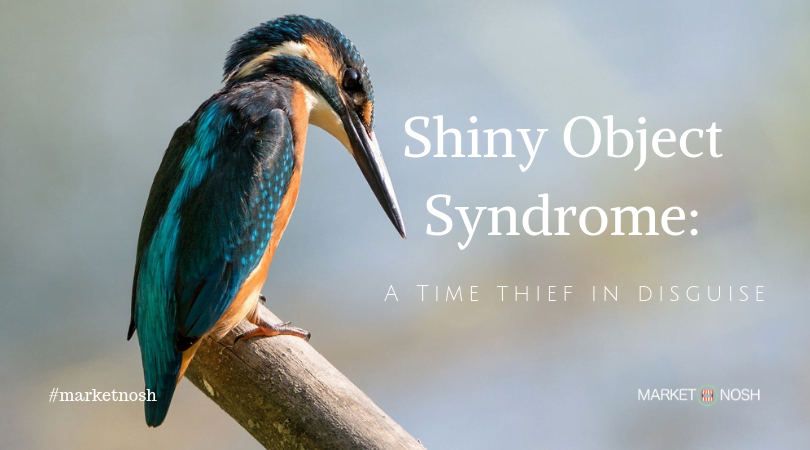Shiny Object Syndrome – A Time Thief in Disguise!
No one likes admitting their own weaknesses, but The Shiny Object Syndrome is a real thing to be on the lookout for.
When We Get Easily Distracted It Affects Our Productivity
In today’s fast-paced world, distractions are everywhere. From constant notifications on our smartphones to the lure of social media, it’s no wonder that many of us struggle to stay focused.
Understanding why we get easily distracted and how it leads to procrastination and poor performance is crucial for improving our productivity and overall well-being.

The Science Behind Distraction
Distractions occur because of the way our brains are wired. Our brains are designed to be alert and responsive to our environment. This evolutionary trait, which once helped our ancestors survive by alerting them to potential dangers, now makes it difficult for us to concentrate on a single task for extended periods.
Research by Dr. Gloria Mark, a professor of informatics at the University of California, Irvine, shows that it takes an average of 23 minutes and 15 seconds to regain focus after an interruption.
This means that every time we check our phones or get sidetracked by a colleague, we lose valuable time and momentum.

The Role of Technology
Technology is one of the biggest culprits of distraction today. With the average person receiving about 63.5 notifications per day, according to a study by Duke University’s Center for Advanced Hindsight, it’s easy to see how we can become overwhelmed and distracted.
Each notification pulls our attention away from our tasks, making it harder to concentrate and complete our work efficiently.
Procrastination: A Byproduct of Distraction
When we are constantly distracted, we tend to procrastinate.
Procrastination is the act of delaying or postponing tasks, often because they seem too difficult or unpleasant. According to Dr. Piers Steel, a professor at the University of Calgary and author of “The Procrastination Equation,” up to 20% of people identify themselves as chronic procrastinators.
Real-Life Examples
Consider a student who has a major project due. Every time they sit down to work, they are bombarded by social media notifications, texts from friends, and the temptation to watch videos online.
Each distraction not only takes time away from the project but also increases stress and anxiety about the looming deadline. As a result, the student may rush through the project at the last minute, leading to poor-quality work.
In the workplace, an employee might struggle to meet deadlines because of constant interruptions from emails, meetings, and chats with colleagues. This can lead to incomplete tasks, mistakes, and a lack of productivity, which can ultimately affect their career growth and job satisfaction.

Strategies to Combat Distraction
To combat distraction and improve focus, consider the following strategies:
- Set Specific Goals: Break down tasks into smaller, manageable steps and set clear, achievable goals.
- Create a Distraction-Free Environment: Designate a quiet workspace and limit access to distracting devices.
- Use Technology Wisely: Turn off unnecessary notifications and use apps that promote focus and productivity.
- Practice Mindfulness: Engage in mindfulness exercises to train your brain to stay present and focused.
Understanding why we get easily distracted and how it affects our productivity is the first step towards creating a more focused and productive life. By implementing these strategies, we can reduce procrastination, improve our performance, and achieve our goals more efficiently.
Have you found ways to keep focused on a task? Let us know over on Facebook. It will be great to offer some solutions to this very modern problem.







